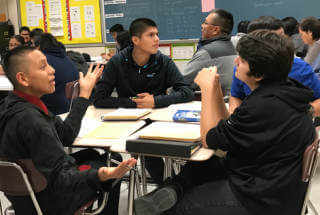Building background is all about linking the past to the new. Students need this done transparently in order to develop the skills to be able to do it on their own. Effective teachers spend time connecting previous lessons with new ones just to give students the best chance possible to master the new material.


There are a number of reasons why this is such an important step in SIOP to take even when you think there isn't time to do it. Here are three ACEs to building background in this way:
Contrary to what it may feel like, spending a few minutes connecting yesterday to today actually speeds things up for three reasons.
There are a plethora of ways to connect yesterday to today in the content area classroom. Here are three ways that you can try out without any preparation:
TESOL Trainers provides world-class professional development on SIOP for PreK-12 instructors. Whether it be a one day introduction to SIOP or a five day intensive look at the framework, John Kongsvik will transform how teaching and learning occur in your school.
In addition to professional development, TESOL Trainers provides iCOACH, it powerful peer coaching program, that increases the rate of implementation to 95%.
Click the button below to claim your free ebook and join our mailing list.